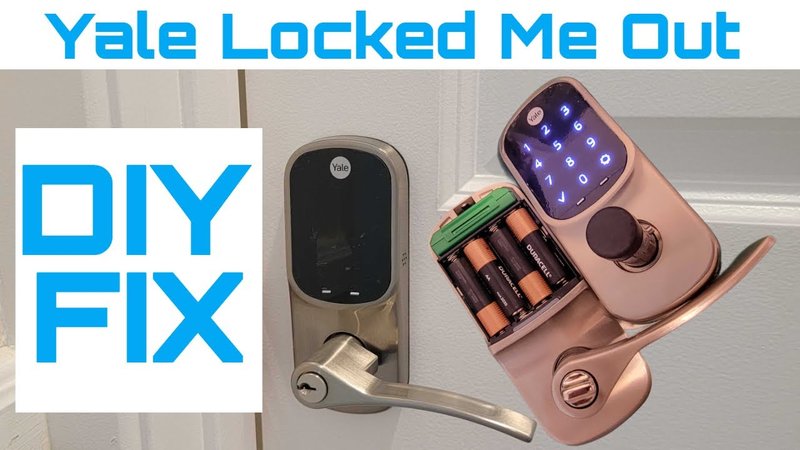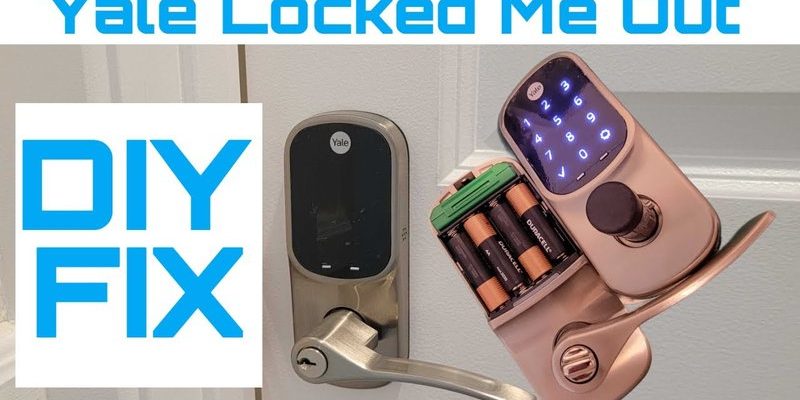
Let’s face it, electronic locks aren’t always as intuitive as we’d like. When they beep, blink, or flash error codes, it can feel like you need to be a locksmith—or a mind reader—to crack the message. The good news? Most of the time, constant beeping from a keypad lock is caused by a few common issues. Clean explanations (with a dash of patience) can get your entryway back to peaceful in no time.
What Does Constant Beeping on a Keypad Lock Mean?
Here’s the thing: *your lock is talking to you*, just not in words. A keypad lock beeping constantly is its way of waving a red flag, hoping you’ll notice. It’s not random—there’s always a reason. Most electronic locks use sound signals to report problems or changes—think of it like your car’s check engine light, but for your door.
Constant beeping is usually paired with blinking lights or an error code on the keypad display (if there is one). Some models, like the Schlage Connect or Yale Assure, will show numbers or colored lights to go with the beeps. Others just beep with no visual feedback, which can make things a bit trickier.
You might be wondering, “Can I just ignore it and hope it stops?” Honestly, that’s probably not the best plan. The beeping won’t go away until the problem is fixed. Common culprits are low batteries, stuck buttons, failed syncing, or an error in the locking mechanism. Brands like Kwikset or August each have their slightly different patterns, but the meaning is pretty consistent across the board.
If your lock is beeping but still lets you in and out, that’s actually good news—it means there’s still time to fix it before you end up locked out. But if you notice trouble entering your code or the keypad seems frozen, it’s a sign to take action right away. Next, let’s dig into specific reasons and solutions.
Most Common Reasons Your Keypad Lock Keeps Beeping
Low battery is by far the most common reason a keypad lock won’t stop beeping. Think of it like your smoke detector’s loud panic when the battery’s almost dead. For most locks (Schlage, Yale, Kwikset), the constant beep is a built-in warning to swap the batteries soon or risk getting locked out. Many locks run on standard AA or 9V batteries, and the beeping usually gets more frequent as power fades.
Another frequent cause is an error code triggered by a mis-entered PIN, jammed bolt, or a failed pairing attempt with an app or remote. If you’ve recently tried to sync your lock with your phone, pair it to a smart home system, or reset it, the process might not be complete—and the beeping is how your lock tells you. Some locks, like the August Smart Lock, will beep if the door isn’t closed properly or the bolt can’t extend.
Let me explain another sneaky culprit: a stuck keypad button. If one of the buttons is jammed down by dirt, grime, or even an accidental spill, the lock can think you’re constantly pressing a key, which triggers a warning beep. In rare cases, damage to the internal mechanism can also set the beeping off—like if water got inside the keypad or the lock body was knocked out of place during installation.
In short, if your lock won’t stop beeping, it’s almost always trying to save you from a bigger problem. Next, we’ll look at how to figure out exactly what your lock is saying.
Understanding Error Codes and Beep Patterns
Most electronic keypad locks don’t just beep at random—they use beep patterns and error codes to point you toward the problem. The trick is knowing what those codes mean for your specific lock brand and model.
- Schlage: Schlage locks usually use long and short beeps, sometimes with a blinking LED. Three fast beeps after entering a code usually means a wrong PIN. Constant beeping with a red light means a misaligned deadbolt or low battery.
- Kwikset: Kwikset’s SmartCode models often flash a red or amber light alongside slow, steady beeps for battery issues, or rapid beeps if you’ve tried the wrong code too many times.
- Yale: Yale keypads often pair a warning beep with an error icon or “Lo” on the display for battery trouble. A stuck button will result in continuous beeping and no input recognition until released.
- August: August Smart Locks use beeps to signal incomplete installation or bolt jams, in addition to low battery warnings sent to your phone app.
Here’s an insight:
Most locks follow the same logic—beeping gets faster and more urgent as the issue becomes more serious. Pay attention to how the beeping changes when you try different actions, like opening the door or entering your code.
If your lock comes with a manual (even if it’s stuffed in a drawer somewhere), check the troubleshooting or error code section. If you threw the manual away, most brands have code lists on their support websites. Knowing the beep pattern can save you from guessing—and from unnecessary resets or battery swaps.
How to Stop the Beeping: Step-by-Step Troubleshooting
Let’s roll up our sleeves and get your lock back to silence. Here’s a step-by-step plan to stop constant beeping from your keypad lock.
1. Check and Replace the Batteries
Even if you think the batteries are fine, swap them out first. Use fresh, name-brand batteries of the recommended type (usually alkaline AAs or a 9V). Remove the battery cover, replace, and wait a few seconds for the lock to reset. If the beeping stops immediately, you’ve solved the problem.
2. Inspect the Keypad and Lock Mechanism
Take a close look for stuck keys, dirt, or gunk around the buttons. Gently clean the keypad with a soft cloth. If you find a stuck button, free it with a toothpick or cotton swab—being careful not to damage anything.
3. Check for Bolt Jams or Alignment Issues
Open and close the door, watching how the bolt moves. If it feels sticky or doesn’t fully extend, the lock may beep to warn you. Try adjusting the door or hinges so the bolt can move freely.
4. Review Error Codes or App Warnings
If your lock’s connected to an app, check for notifications about errors or failed sync attempts. Some locks need to be re-paired or reset if a software update didn’t finish. Follow any on-screen instructions from the app.
5. Perform a Basic Reset (if needed)
If the beeping won’t stop and you’ve tried everything else, look up how to reset your specific lock model. Usually, this means holding down the “reset” button (found under the battery cover) for a few seconds. Don’t do a full factory reset unless you’re ready to reprogram your codes and settings.
If none of these steps work, you might be looking at a hardware problem, and contacting the manufacturer’s support or a locksmith is your safest bet.
When to Reset, Sync, or Pair Your Keypad Lock
Resetting, syncing, or pairing your lock can sometimes feel like magic—you press a few buttons, and suddenly things work again. But these aren’t one-size-fits-all solutions, and using them at the wrong time can make things worse.
Resetting should be your last resort. A full reset wipes out all your stored codes and settings, which means you’ll need to re-enter every PIN and possibly re-link your lock to a remote or smart home hub. If your lock is constantly beeping and you’ve already tried battery swaps and basic cleaning, a reset can solve deep software glitches or interrupted updates.
Syncing is needed if your lock is connected to an app or smart home system and you notice the beeping started after a failed firmware update or power loss. Follow your brand’s instructions to re-sync—sometimes that’s a quick in-app process; other times it means holding “program” or “learn” buttons on the lock.
Pairing is only needed if you’re setting up a new device (like a replacement remote, fob, or bridge). If your lock keeps beeping during the pairing process, it usually means something didn’t connect right. Carefully follow the pairing instructions again—rushing can lead to repeating beeps and error codes.
If you’re not sure what your lock needs, check the app or the manual. Many brands, like Schlage or Yale, offer short how-to videos on their websites for resets, syncs, or pairing.
Comparing Universal Keypad Locks vs Brand-Specific Remotes
If you’re shopping for a new keypad lock—or wondering whether a *universal* lock is easier to troubleshoot—there are some real differences. Universal keypad locks are designed to work with different brands or home automation systems, while brand-specific locks (like a Kwikset SmartCode or Yale Assure) use their own codes and error messages.
Here’s the main trade-off: universal locks promise flexibility but sometimes come with more complicated setup or pairing steps. When these beep constantly, you might need to check multiple manuals or apps to figure out what’s wrong. Brand-specific locks, on the other hand, usually have more straightforward troubleshooting and consistent error codes.
If you’re the “set it and forget it” type, sticking with a major brand means you’ll find more online help, clearer code lists, and easier syncing with remotes or smart home hubs. But if you love flexibility and don’t mind a little extra research, universal locks can be a good choice—just be ready for more involved troubleshooting if the beeping starts.
How to Prevent Beeping Problems in the Future
Let me say this: the best way to deal with constant keypad lock beeping is to avoid it in the first place. Regular maintenance keeps your lock quiet, reliable, and ready for anything.
- Change the batteries before they run low. Set a calendar reminder to swap them every 6–12 months (or sooner if the lock gets heavy use).
- Keep the keypad clean. A quick wipe with a dry cloth every few weeks prevents stuck buttons and grime buildup.
- Check the lock’s alignment—especially if you notice the bolt sticking or the door sagging. A little adjustment can prevent jams and error codes.
- Update software or firmware if your lock is smart-enabled. Let updates finish completely before unplugging or locking the door.
- Store a manual backup key somewhere safe, just in case the lock does fail or the beeping signals a bigger issue.
Truth is, most beeping issues are easy to prevent if you give your lock a little regular attention. It’s like car maintenance—change the oil, check the tires, and things run much smoother.
The Bottom Line: Listen to What Your Lock Is Saying
A keypad lock that keeps beeping isn’t just doing it to be annoying—it’s waving for help. Whether it’s batteries, error codes, syncing failures, or a stuck button, there’s a fix if you know where to look. Regular checks, a little cleaning, and keeping the manual handy can save you a ton of hassle (and noise).
The next time you hear your lock sounding off, pause for a second and treat it like a little puzzle. With a bit of patience and the right steps, you can get rid of the beeping—and help your lock last for years. Home should be a place of peace, not unwanted alarms. Pay attention to the warning signs, and you’ll keep things running smoothly—one quiet door at a time.
